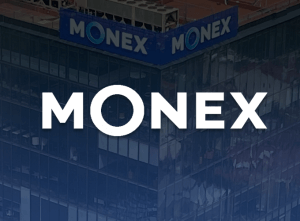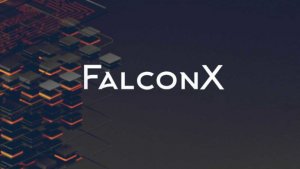Exploring Connectivity and Other Critical Enablers in 2021
Last year gave rise to digital banking applications and web-based transaction capabilities—all cementing the idea your financial needs are now an online experience.

By: Bruce Garrison, Chief Revenue Officer, Bluebird Network
In 2020, a J.D. Power survey, “found that 37% of retail bank customers said they were using their bank’s mobile app more frequently than ever before, and 48% said their preferred means of depositing a check … was via mobile phone.” Additionally, in July 2020 Cornerstone Advisors put out a report, which found that 14.6 million Americans considered digital banking to be their primary way to the bank. That marks a shift likely due to COVID-19. Due to the convenient nature of digital banking, it will likely continue to rise in 2021.
Because customers’ demand for digital services is growing, you need a capable digital infrastructure with robust service capabilities. If you are making the move to mobile or making a full digital transformation understand that with the use of these various services across disparate locations—the foundational IT infrastructure needs to be able to quickly and securely transfer and manage that data. Today, connectivity and comprehensive data management are at the core of the financial services environment. Now more than ever, it’s important that financial entities understand how to pivot their IT infrastructure to meet evolving customer demands.
The State of the State of Digital Banking
The rise of digital banking within the last decade saw PayPal take the world by storm in 1998. This catalyzed a new era in finance, and as technology advanced within the 2000s, the industry saw more banks strengthen their online presence and capabilities and saw more customers switch to mobile banking as smartphones become increasingly popular.
Now, banks of all sizes are striving to create mobile apps allowing their customers to access and manage their money from anywhere at any time. The industry has also seized a new frontier in Artificial Intelligence and Machine Learning to monitor and report fraudulent charges or even learn from customer habits to create more personalized banking experiences.
Personalization including dashboards and an enhanced customer banking experience is driving customer service expectations higher. With that financial institutions need to focus on a smoother, quicker, and more convenient experience. Seamless experiences are now mere table stakes for financial institutions to keep current customers and obtain new ones. Customers want banks to be the “Netflix of banking” according to J.D. Power.
At the Core is Connectivity
Demand for increased bandwidth and data storage space is growing as these new services and applications are incorporated. Furthermore, internet and wireless connectivity are no longer a luxury, but a necessity for consumers, which means that financial institutions are now required to meet consumers on their mobile devices, in their current location. As a result, robust networking that empowers mobility and allows data to remain highly agile is a priority.
Traditionally, many banks have relied on a variety of network topologies depending on the size of the institution. Smaller banks may use basic internet connections and Virtual Private Networks (VPNs) to securely connect across their footprint. Medium-sized or larger banks might use Multiprotocol Label Switching (MPLS) networks for their Wide Area Network (WAN) connectivity. But we are seeing a rise in Software-defined WAN (SD-WAN) enabling banks to connect to their branches more cost-efficiently. However, these solutions still require a secure, stable connection. If their networking is not up to par, customer experiences will fall short and suffer from latency and inferior performance, or even worse, they could allow their sensitive banking data and personal information to become exposed.
Fast connections—especially those that bypass the public internet and the capability to connect all branches and locations to the same data bank of information should be the foundation of the new financial organization’s network. Transport services to carry data securely between branches and a data center housing that information is also necessary components of the new mobile financial IT strategy. As bandwidth demands expand, business footprints need to grow to reach new markets and data storage requirements as they increase. Additionally, traditional approaches must evolve to align with these new considerations.
Digital Transformation is Happening – NOW!
When it comes to ensuring cost efficiency, security, geographic advantages, and more, a financial institution’s data center and connectivity provider can be a make-or-break digital transformation decision. As such, finding the ideal partners for your business requirements is key.
Financial institutions should select connectivity and data center partners that suit their business locations and end-user destinations of their transactions (meaning that if a regional bank is looking for a data center or network), they should also consider a regional provider. You need to also ensure that your providers offer physical security and redundancy as it is vital. While storing data and digital records offsite from the primary business site helps protect the information in itself, data center providers deliver additional measures to ensure data and network uptime is insulated against natural disasters, outages, man-made disruptions, and most importantly -hackers.
The connectivity element of any digital financial strategy is paramount and fiber-optic, dedicated internet access is one of the most secure connections a bank can have in order to empower online applications. If someone attempts to tap a fiber-optic cable, there is a high chance that the cable will break, disrupting the connection and alerting the provider to an issue before the infiltrator has time to extract information. Fiber cables also don’t radiate electromagnetic signals as they are dielectric — meaning they don’t transmit electricity. This means that the transferred data reaches any and all destinations quickly, while also being nearly impossible to intercept with sensitive antennas. Cloud connection services are also an ideal alternative for bypassing the public internet and provisioning an added layer of data security. These services enable a private and completely secure connection to mission-critical data and necessary applications stored in the cloud.
Not all providers are alike, and not all will offer the same suite of services or level of service excellence to ensure banks and other financial institutions can reach their goals quickly and cost-effectively. Moreover, many providers do not offer connectivity and data center solutions together. Seek out providers that offer best of breed fiber-optic connectivity, are geographically advantageous facilities, and that rank physical security as a priority. There are some that offer bundled services that provide every element of the new IT strategy with the added ease of implementation and cost-efficiency.
Upping the Ante on Uptime and Security is the Name of the Game
Because the use of online and mobile banking is rising – fast and secure data storage and transport are the foundation for financial institutions. Sensitive customer information must be handled with the utmost care, while still being accessible from various branches that span disparate and far-reaching distances. A data center with robust connectivity options can securely store that information and help it reach those different locations, and it’s an IT element that all financial institutions should be looking for – this is also important for delivering the highly demanded personalized experiences. Once the underlying infrastructure is reinvented to suit the new world of always-on, always-accessible digital capabilities, banks and customers alike can look forward to a new world of financial success.
The subject matter and the content of this article are solely the views of the author. FinanceFeeds does not bear any legal responsibility for the content of this article and they do not reflect the viewpoint of FinanceFeeds or its editorial staff.









